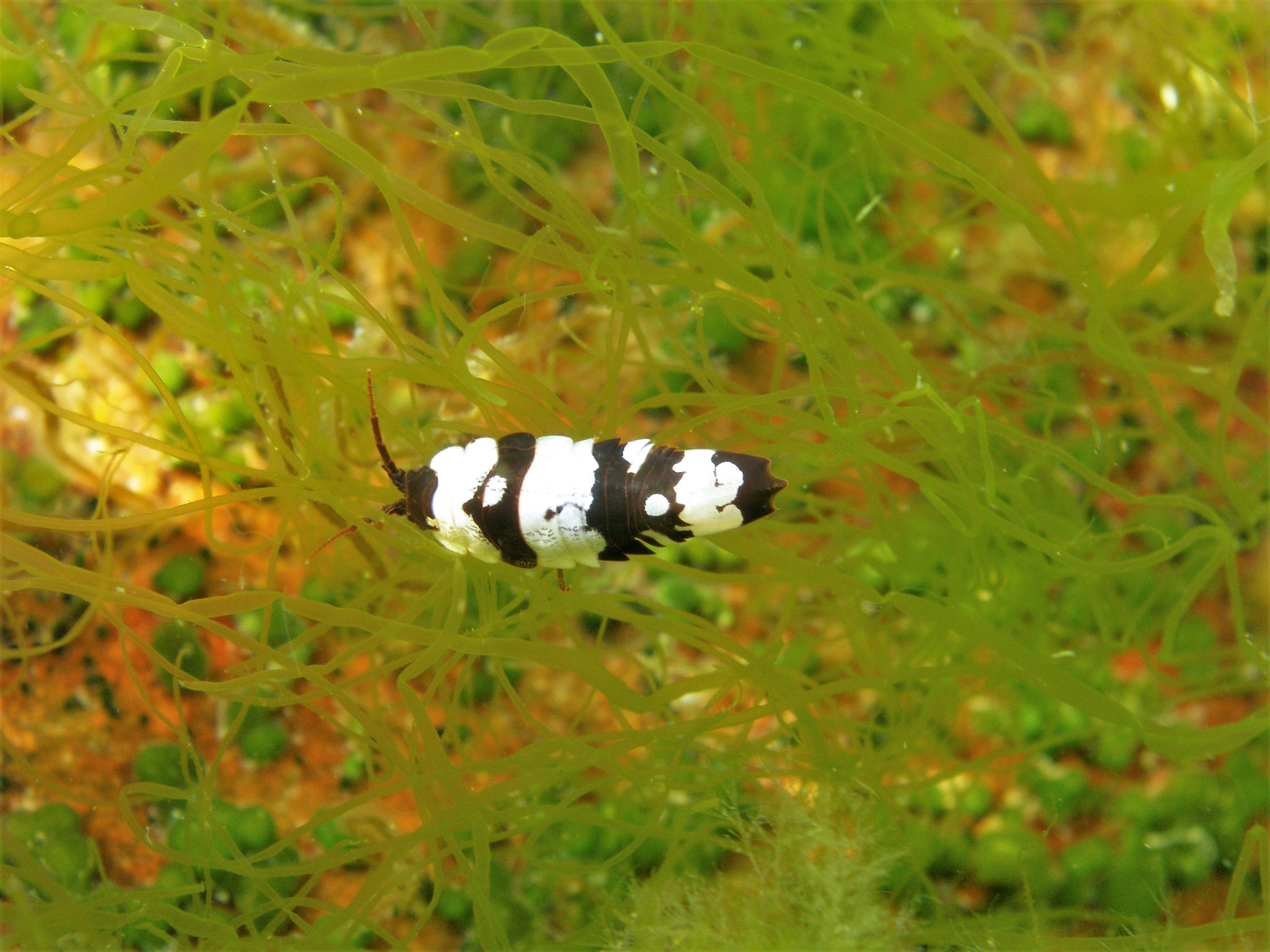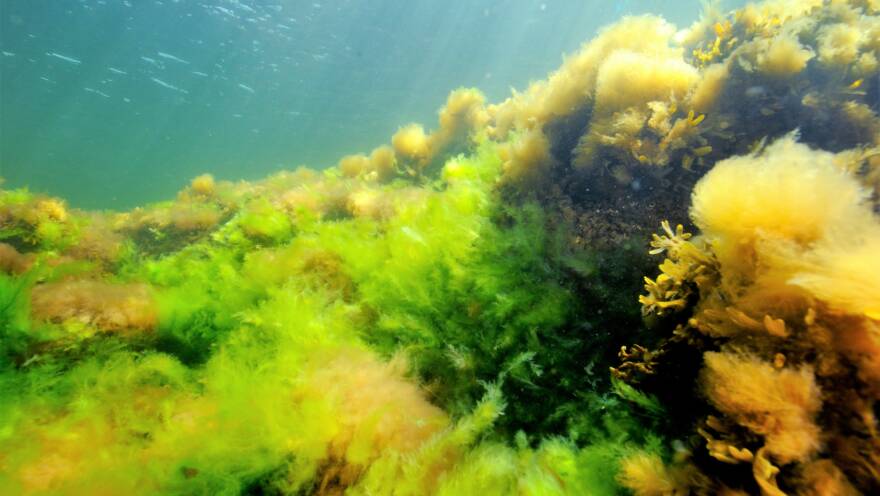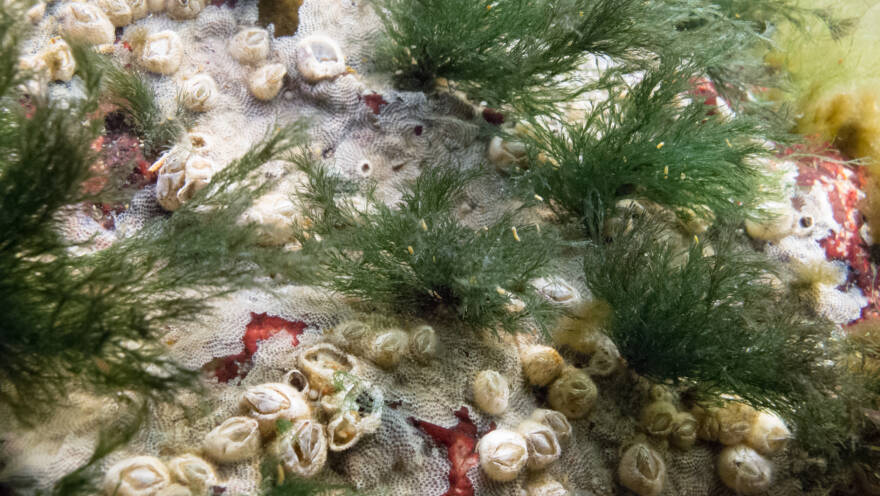
Green algae love well-lit areas
Green algae grow along Finland’s rocky and stony shores in well-lit zones, which are almost at the water’s surface.
Mermaid’s hair is the most common green alga
The most common species of green algae in Finland is the well-known Mermaid’s hair alga(avautuu uuteen ikkunaan, siirryt toiseen palveluun), i.e. Cladophora glomerata. It is found on almost every shoreline as a bushy, bright green growth that conquers the water’s edge in early summer. This green alga grows as single filaments up to 30 centimetres in length. In ideal conditions, this species can form a dense zone of vegetation which drifts back and forth in the waves.
Fun fact: in Finnish, the name of this green alga species is quite masculine! It is called “viherahdinparta”, which describes the green beard of the sea god Ahti!
On rocky seabeds which are deeper or more fragmented, the green Mermaid’s hair alga only occurs here and there in individual small tufts. In Finland, the deepest observations of this alga are from depths of about seven metres, where the rocky surfaces are usually covered by red algae.
In addition to Mermaid’s hair alga, there are other species of Cladophora along the coastline. For example, the common green-branched weed (Cladophora rupestris(avautuu uuteen ikkunaan, siirryt toiseen palveluun)) is usually found in deeper and more saline water, thriving below the bladder wrack zone. Also, in more brackish water grows the fragile and cloud-like growth of C. fracta(avautuu uuteen ikkunaan, siirryt toiseen palveluun).

Gutweeds thrive on nutrient-rich shores
Other green algae, such as the so-called gutweeds(avautuu uuteen ikkunaan, siirryt toiseen palveluun) or grass kelp, also thrive in the same habitats as the Mermaid’s hair alga. Gutweeds are usually brighter green in colour than Mermaid’s hair seaweed and have broader fronds than filamentous algae. These fronds often contain gas bubbles left behind after photosynthesis. By squeezing these smooth and shiny algae, the bubbles can be popped out into the surrounding water.
Like the Mermaid’s hair alga and its cousins, gutweed algae are fast-growing and conquer hard underwater surfaces in a very short time. These intestine-like algae thrive in eutrophicated waters can be found equally well along the nutrient-rich shores of bird colony islands and estuaries alike.
There are three gutweed species found in Finland; i.e. large gutweed(avautuu uuteen ikkunaan, siirryt toiseen palveluun), slender sea-lettuce(avautuu uuteen ikkunaan, siirryt toiseen palveluun), and winding nori(avautuu uuteen ikkunaan, siirryt toiseen palveluun). To separate one from another requires a microscope and a practised eye.
Did you know?
Another green alga, known as a lake- or moss ball(avautuu uuteen ikkunaan, siirryt toiseen palveluun) grows in two forms: either as a filamentous furry or moss-like layer attached to rock surfaces or as loose clumps, which under certain wave conditions are rolled into ball shapes(siirryt toiseen palveluun). The algae layer on the ball’s surface continues to photosynthesize and can even grow to the size of a table-tennis ball. In the oceans, similar moss balls can reach the dimensions of a football.
Green algae:
- Mermaid’s hair (Cladophora glomerata)
- Common green branched weed (Cladophora rupestris)
- Fin. Hentoahdinparta, “the fragile beard of the sea god Ahti” (Cladophora fracta)
- Gutweeds (Ulva spp.)
- Gutweed or grass kelp (Ulva intestinalis)
- Slender sea-lettuce (Ulva linza)
- Winding nori (Ulva flexuosa)
- Lake ball, moss ball or marimo ball (Aegogrophila linnaei)
-

-
 Find out more
Find out moreColourful reefs

